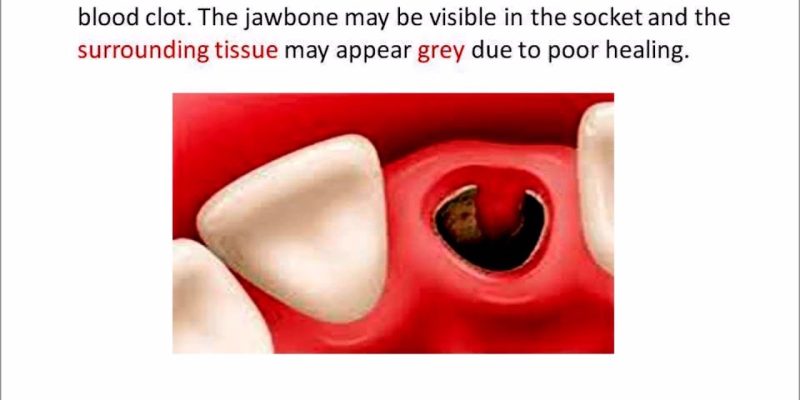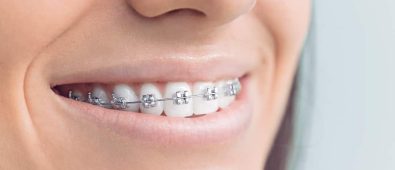Did you know that roughly ten million wisdom teeth are removed every year? When people undergo this procedure they typically expect some pain and discomfort during the recovery period.
Sadly, for a small percentage of the population, this recovery will be borderline excruciating. This is due to a condition known as a dry socket.
But what is dry socket? And how do you treat/prevent them from happening?
If you want to know the answer to these questions, and more, then you’re in the right place. In this guide, we’ll teach you everything you need to know about this condition. Let’s get started!
What Is a Dry Socket?
The socket is a term that’s used to describe the hole in a bone when a tooth is removed. Typically, after you pull out a tooth a blood clot will form around the site in the mouth. That’s why it’s highly recommended to visit an expert like this dentist in avon lake so they can prescribe medications to treat dry sockets as early as possible.
This blood clot serves a vital purpose. It keeps both the nerves and the bone found underneath the tooth extraction site safe while the wound heals. Sadly, this important clot doesn’t always stick around.
Sometimes it dissolves or becomes dislodged. This is a serious problem because it exposes those nerve endings to things like air, food, liquid, and whatever else goes in your mouth while you recover.
This, in turn, leads to infection which is known as a dry socket. While this dental infection typically only lasts for five to six days it adds intense pain on top to an already painful condition.
The good news is that dry sockets are usually quite easy to treat especially if they’re caught early. We’ll go more into this treatment later. But, for now, let’s take a look at who is prone to get dry sockets.
Who Gets Dry Sockets?
It’s most common to see dry sockets form following a wisdom tooth removal. However, this is far from the only circumstance in which they arise.
The truth is that anyone who has a tooth pulled is susceptible to dry sockets. That being said, there are certain activities that you can do during recovery that make you more likely to get them.
First, there’s smoking. Whether it’s tobacco, cannabis, or something else, you’re exposing your wound directly to the smoke. This is a recipe for infection.
The same goes for people that don’t engage in proper oral hygiene following their procedure. When you avoid cleaning your mouth you create a haven for bacteria to thrive.
You should also avoid rinsing and spitting, or drinking through a straw while you recover. At first glance, you might think these things would aid recovery.
But, both actions increase the chance that your blood clot will fall out early. This can make you more prone to infection.
Finally, sometimes dry sockets aren’t caused by any activities you do during recovery. This is true if you have a large extraction site or a family history of dry sockets.
Dry Socket Symptoms
There are many symptoms of dry socket. However, the easiest one to identify is pain that gets progressively worse. If left unattended, then it can radiate away from the extraction site and toward your ear or neck.
It’s also common to have a bad taste or breath due to the infection. If you can see the site where your tooth was extracted, then you can also get visual confirmation.
When you look at the extraction site there should be a dark red clot that’s visible. If this clot is missing, or you see a white bone, then you’re likely dealing with a dry socket.
How Do You Treat Dry Sockets?
Most of the time, dry sockets will go away on their own. To deal with the pain they cause, you can try some aspirin or ibuprofen to ease any discomfort. Sometimes you may need stronger medication.
If you’re dealing with a wisdom teeth extraction, then you’ll probably have access to these things. Otherwise, you may need to be prescribed something stronger.
In some cases, the dry socket can get so bad that you’ll need the dentist to treat it. First, they’ll remove any debris from the socket. Then, they’ll clean it and fill it with either special paste or medical dressing.
If you receive dressing, then you may need to come back every few days to get it changed. If the infection is spreading to other parts of your body, then your doctor might suggest antibiotics to treat the infection.
How to Prevent Dry Sockets in the Future
In some cases, dry sockets might be unavoidable. However, in most cases, there are things you can do to prevent them. The easiest thing is to avoid smoking any cigars, cigarettes, e-vapes, or cannabis while you recover.
Ideally, you should avoid it for up to a week. However, if you struggle with taking a break, then try to at least wait two days before smoking again. You should also talk to your dentist if you take birth control medication.
Why? Because certain birth control will give you different levels of estrogen throughout the month. Sadly, estrogen can interfere with blood clotting.
So, you should coordinate with your doctor when the best day for the extraction is. It will be the day when your estrogen dose is at its lowest.
Finally, when you rinse your mouth make sure you do it as gently as possible.
Appreciate Learning About Dry Sockets? Keep Reading
We hope this article helped you answer the question, What is a dry socket? Sadly, for some people this condition is unavoidable.
However, more often than not it can be prevented by following simple instructions after your procedure. As long as you follow the advice in this article, then you have the best possible odds of avoiding them.
Appreciate this educational content? Keep exploring to find more content you can learn from.



